Digital Media Consultant
Are you throwing your investments in digital video for awareness out the window?
Digital Media Consultant
As recently related in a Forbes article, more and more big companies like P&G, Chase and Uber are putting a major part of their media investments in awareness on hold, without observing any significant decrease in their business results. The direct effects of these investments (generally in programmatic display and video) are actually very hard to quantify in a straightforward manner.
The trend had existed before the pandemic, but the practice of turning off awareness campaigns has been exacerbated by the health crisis. For marketing directors or CMOs, the news might feel like a very cold shower: How is it possible that turning off digital investments in awareness doesn’t lead to any negative impacts on business results?
The answer lies mainly in two aspects:
- advertising fraud;
- a lack of depth when it comes to the implementation and reporting of campaigns.
Advertising fraud
Advertising fraud has been around for a while and isn’t about to disappear, but how can it be prevented? Before tackling the solutions, it’s a good idea to specify what we mean by the term. According to the specialized firm IAS, advertising fraud means any activity that deliberately prevents the display of advertising to the right people, at the right time and in the right place.
All DSPs (demand-side platforms) offer integrated solutions. Google’s DSP, DV360, offers a pre-bid filter by default in order to prevent the delivery of advertising to invalid traffic. Furthermore, it is imperative that brand safety solutions such as those offered by IAS or DoubleVerify be applied in order to prevent, as far as possible, display on sites with a high rate of invalid traffic (IVT).
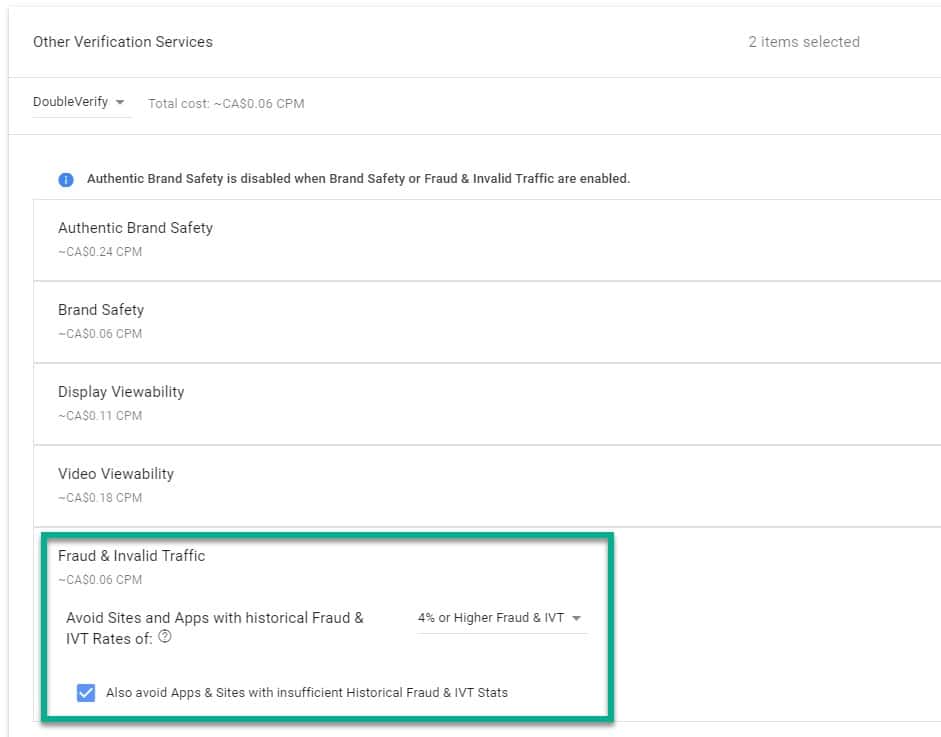
The quality of the inventory in which the ads will be delivered must also be controlled. To accomplish this, exclusion lists at the agency/client level can be used in parallel with inclusion lists. This leads me to my second point, which in my opinion is the most neglected: the lack of depth in implementing and reporting campaigns.
A lack of depth in campaign implementation and reporting
When it comes to awareness campaigns, even for those with terrible quality parameterization, most media buying platforms will always deliver the expected results. At least it will seem that way!
A lot of impressions, a lot of views: When only superficially reported, these are more like vanity results. To get real, quality results, additional qualitative parameters are highly recommended, such as:
- inventory selection, which permits the delivery of impressions on selected partner inventory (PMP) or using good exclusion lists if you decide to roll out your campaign on open exchange;
- contextual category selection, which includes or excludes the categories in which you don’t want your brand to appear;
- positioning, which determines the page placements you want your brand to appear in (you can, for example, exclude interstitials or unknown placements);
- viewability, which aims to ensure delivery of placements with historically high visibility;
- video player size, which lets you exclude placements on small video readers.
A (seemingly) high-performance video campaign
Let’s take for example a campaign hosted in Campaign Manager 360 that we audited in the past.
It was broadcast for a few months and enabled good results to be generated at first glance:
- 11 million video impressions at an average CPM of $13;
- 7 million complete video views at a cost per complete video (CPCV) of $0.03;
- an average visibility of 70%.
This kind of quantitative vanity report would make a good number of marketing managers quite happy, wouldn’t it? It would be wise to be more critical… Yet this is precisely the premature satisfaction that certain decision-makers have taken away from the shallow analysis showing that the P&Gs of this world can remove $200M from their brand awareness marketing budgets without seeing the slightest change in their business results.
Let’s get a little more in-depth on this campaign report.
11 million video impressions at an average CPM of $13
It’s always important to pay attention to the size of the video readers on which these impressions were delivered:

Ouch! Fifty percent of the impressions were displayed in small readers. When presenting this issue to your internal management team (or to an external agency), you will probably get the response that this phenomenon is related to mobile placements (small screen, small format). Wrong answer.
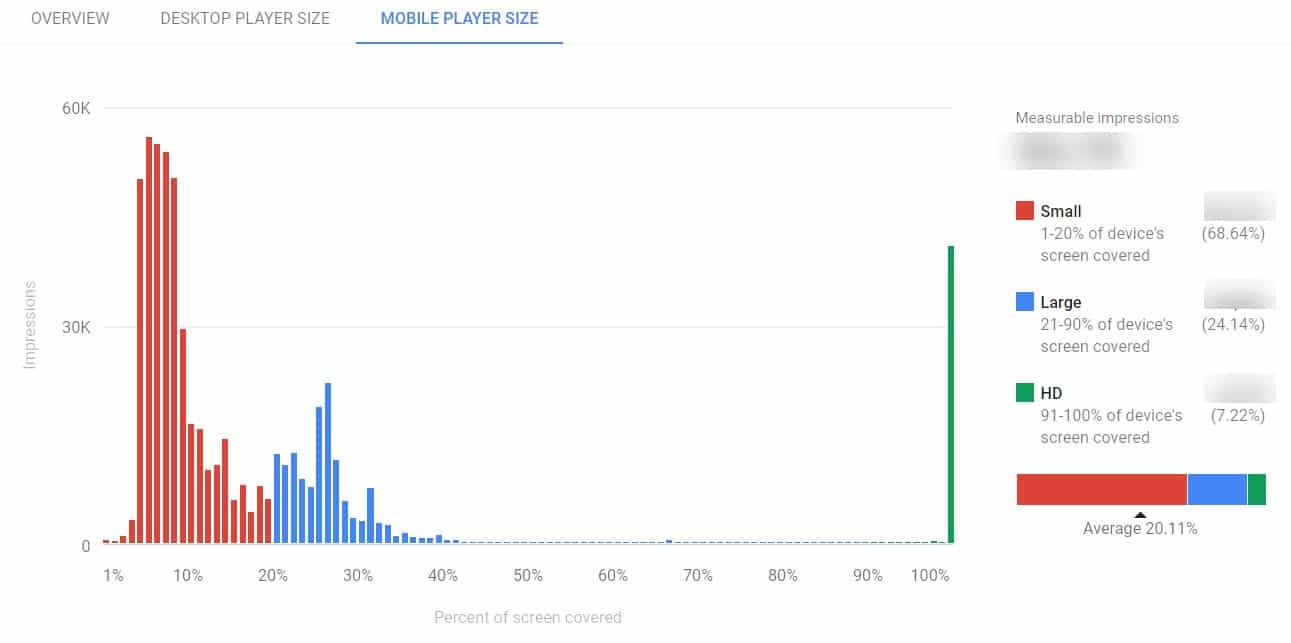
The classification of video readers includes both desktop computers and mobile devices. On mobile, a small reader occupies a maximum of 20% of the screen’s surface. In the table above, you can see that, in the case of the campaign we analyzed, most of the impressions were delivered on readers occupying 10% or less of the screen, which is, frankly, minuscule. This kind of “micro-placement” definitely won’t have any concrete impact on your business results.
Now that you understand this, let’s take a look at the second result.
7 million complete video views at a CPCV of $0.03, with an average visibility of 70%
Can we add the idea of visibility-to-completion to this report? A video can start and finish outside of the user’s field of view. If we’re implementing an awareness campaign in the market, we want our message to be seen from beginning to end by the user, and within their field of view!
Buys are often made according to a CPM format that guarantees an approximate CPCV of $0.03. However, what would happen if we added the idea of visibility-to-completion to the CPM calculation for completed videos?
Let’s analyze the performance of three Canadian providers of video and display inventory that we anonymized for the purposes of this analysis. All three saw an increase in their relative costs varying between 16% and 50%, which is completely normal. With these data in hand, which partner would you choose as an advertiser or specialist? Partner 1, of course! This partner lets you obtain the highest volume of visible impressions to completion, which is effective for displaying the entirety of a message.
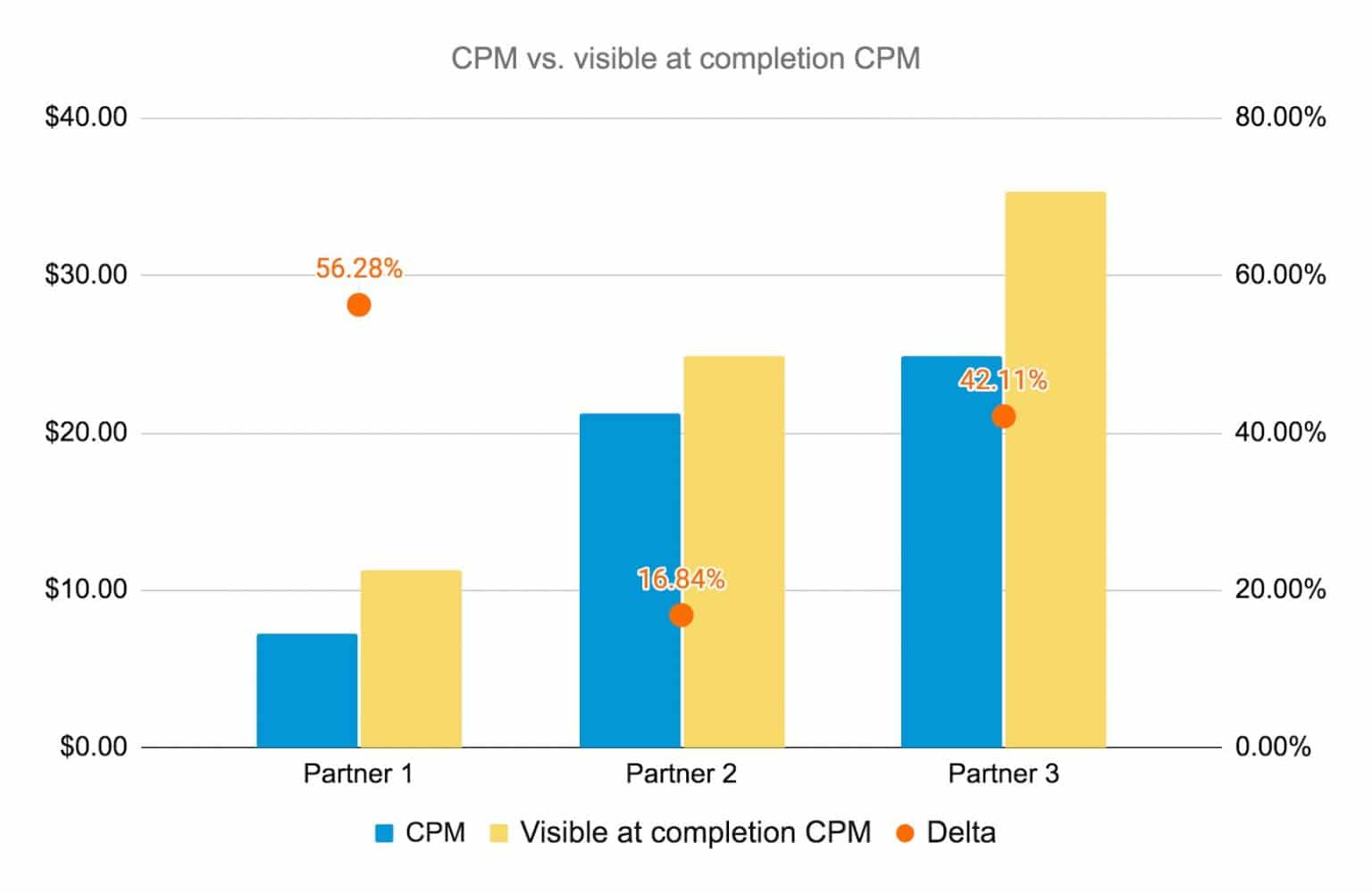
Now, in addition to visibility to video completion, let’s add a second idea that’s used less often: audibility. Basically, for an awareness campaign, we want the message to be seen, but also heard! To this end, we’ll calculate the visible and audible CPM.
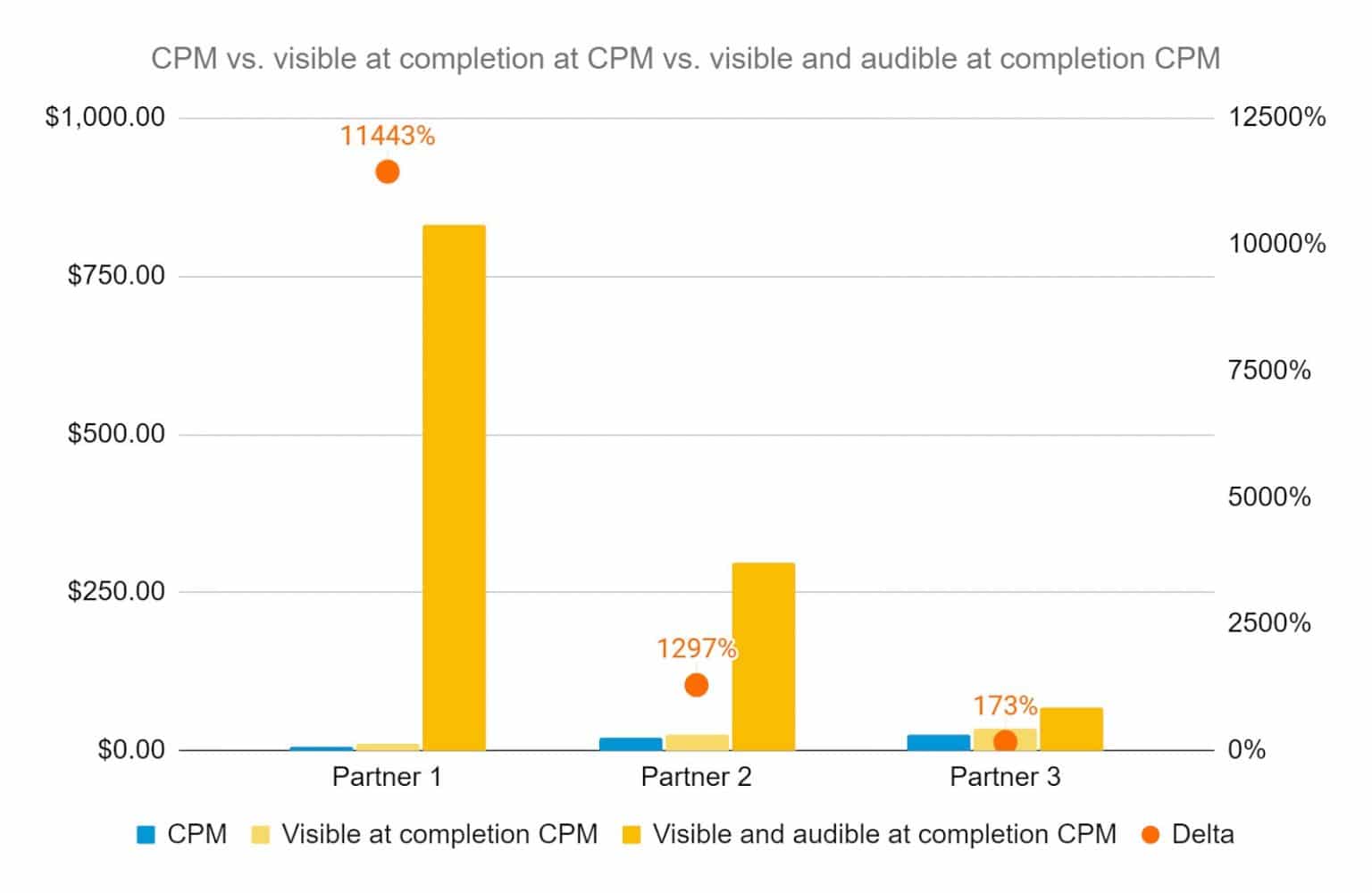
What’s going on in the table above? Partners 1 and 2 deliver videos that have been completed, and were visible… but inaudible upon completion! This means your message wasn’t heard by your target. Partner 3, which seemed more expensive, is in fact the one that delivers the most quality impressions that will have a real impact on the campaign. Obviously, Partner 3 had less than 15% of total investments, since to a specialist relying solely on basic measurements such as CPCV and CPM, this partner seems at first glance to be the most expensive.
For the purposes of this article, we have provided an overview of the approach, but it’s possible to combine this analysis of visible and audible CPM with the stats on screen size to evaluate the quality of your buys and the real return offered by your media partners. If you aren’t vigilant, whether you’re using public inventory (open exchange) or programmatic direct (private deals, preferred deals, guaranteed programmatic), you’ll risk delivering your video awareness ads in sub-optimal placements—this means small-sized videos that play automatically, without sound, following the user as they scroll through the page. Here’s an example:
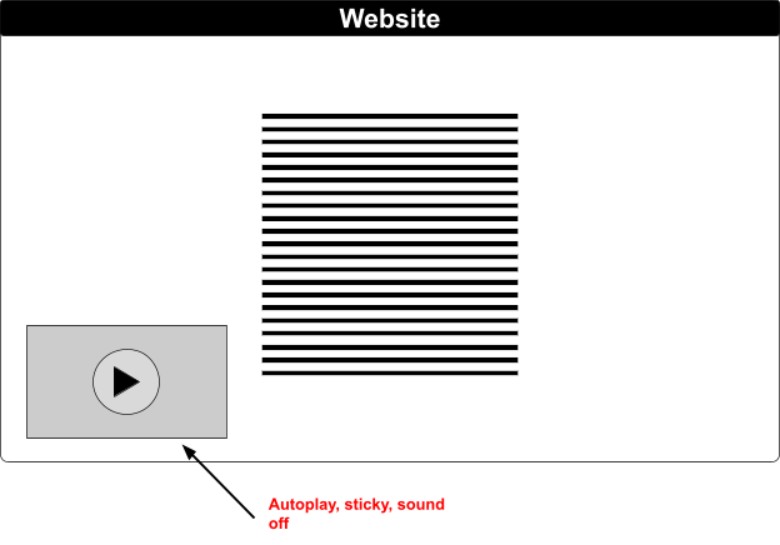
So you should turn off your investments, right? 😉
Of course not. Rather, you should ensure you’re using the right parameters to deliver quality impressions that have a real effect on users. And be careful not to fall for superficial results that aggrandize reality!
Here’s a little recap with a few takeaways:
- Ensure you prevent fraud upstream by using the functionalities provided by your DSP
- If you don’t perform buys directly, verify the tools and processes used with your buyer
- Make a list of properties to which you will deliver
- Keep an eye on the average size of video readers on these properties
- Add the idea of visibility and audibility to your completion analyses
And remember that our team is always available to discuss your digital media buys for brand awareness to help you improve their performance!




